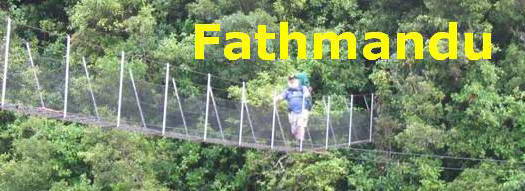
Many thanks for permission to use graphics from their software and toposheets |
 |
|
Vitex lucens Kirk in T.N.Z.I. 29, 1897, 525. (Verbenaceae)PuririDerivation: Vitex = probably from the Latin vieo, "to plait, tie up or twine". Poole and Adams characterise the name, Vitex, as "origin doubtful"; lucens = shining. Synonym: Vitex littoralis A. Cunn. in Ann. nat. Hist. 1, 1838, 461 non Decne in Nouv. Ann. Mus. Hist. na. Paris 3, 1834, 401. (Cunningham had apparently chosen a name already in use.) My father, who farmed around Waiuku and hoped one day I might follow in his steps, told me once that if I was ever buying land to look for puriri growing on it, as a sign of fertile soil. The timber is extremely hard and durable, though it's irregularities make it difficult to work with, and the timber is often marred for cabinetmaking by the holes made in the trunk by the puriri moth, Anaetis virescens. Puriri moth caterpillars feed on the wood of puriri trees and many other species including maire, manuka, wineberry, southern beech, oak and apple. They dig burrows up to 30-centimetres long.The caterpillar stage can last five years. When the adult moth finally emerges, on warm humid evenings from September to November, it lives for only a couple of nights, long enough to breed. It does not feed, as its mouth parts do not work, but an unlucky puriri moth will make a fine meal for a morepork. The female’s wingspan can be up to 15-centimetres, its pale velvety-green colour very ghost-like. The wood was m uch favoured for posts before tanalised pine and Colin Meads changed our farm landscape forever.
The fruit, here green and pear shaped, become rounder and bright pinky red as they ripen and are a favourite food for birds.
Information from New Zealand FloraFamily: Verbenaceae Genus: Vitex Species Vitex lucens
|
|